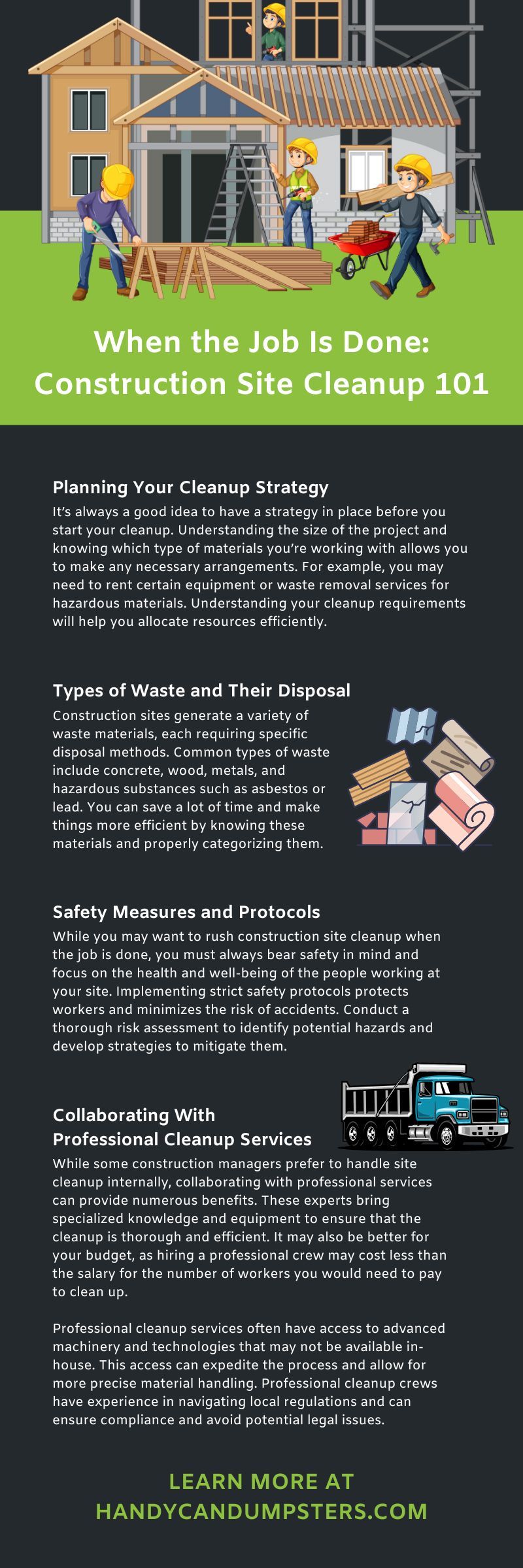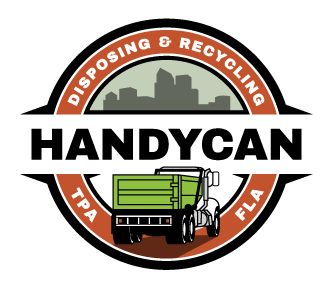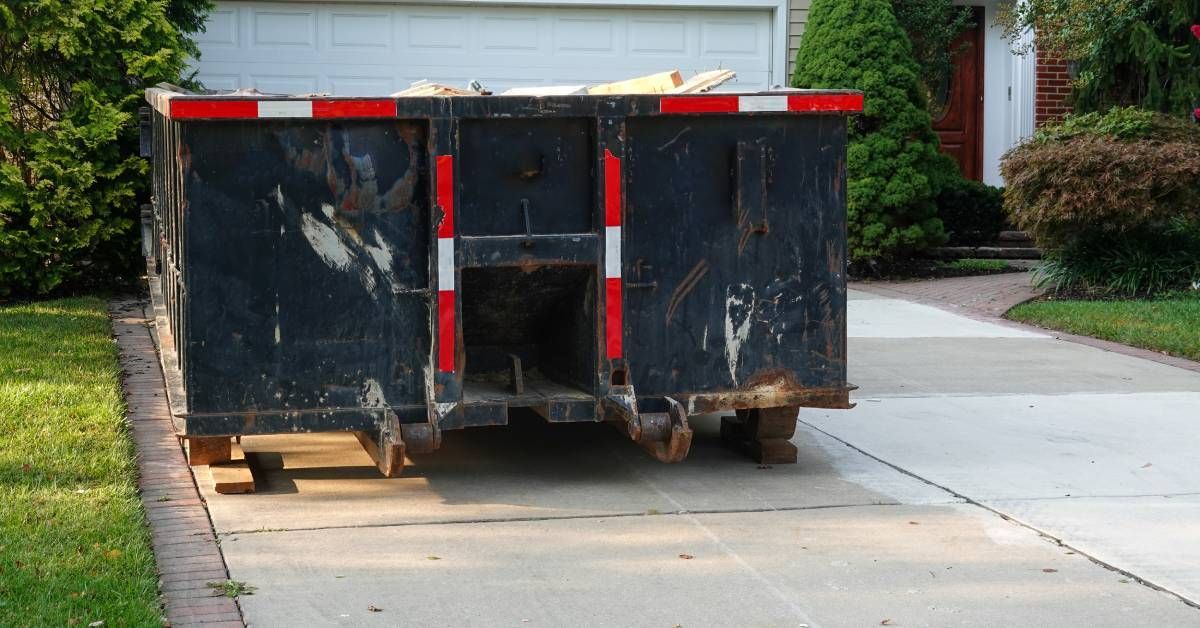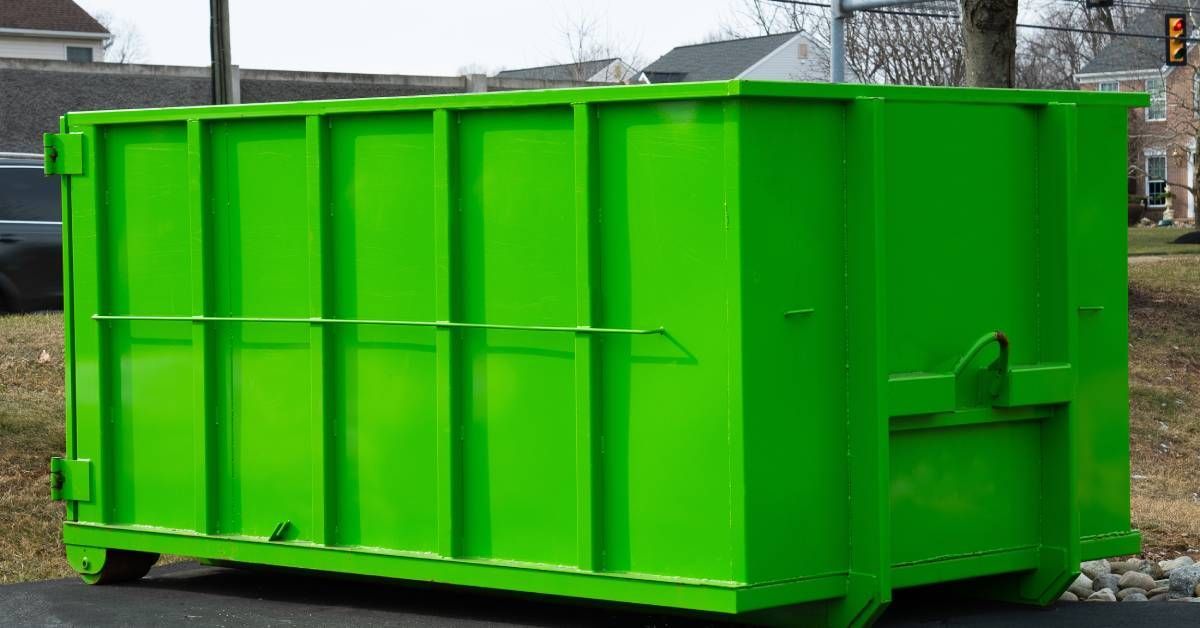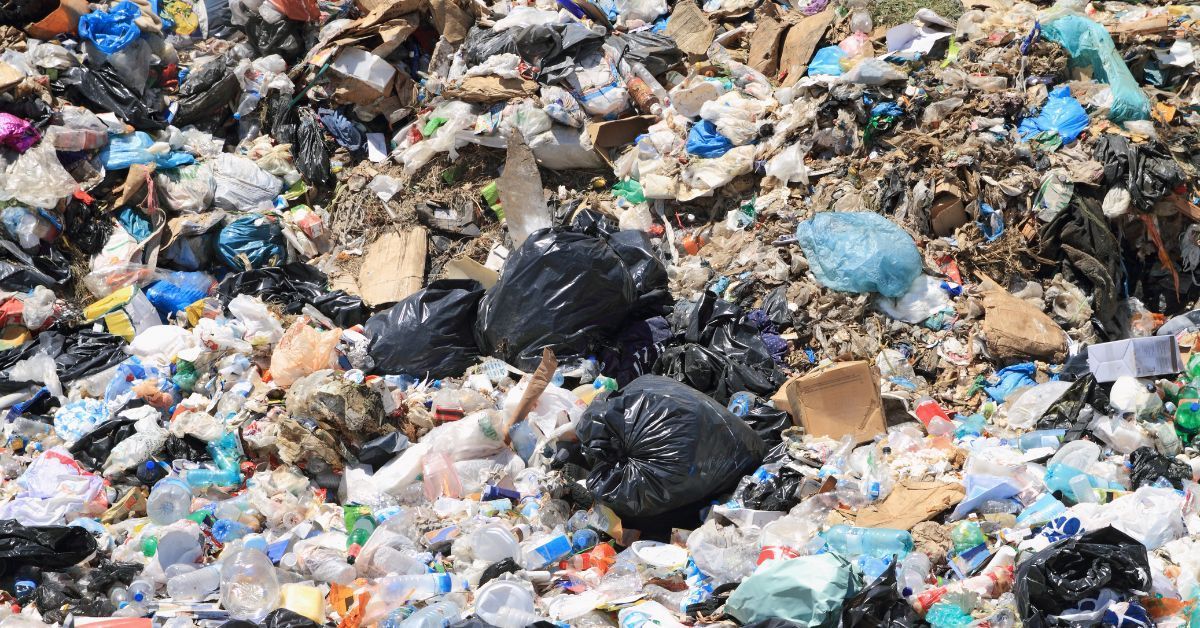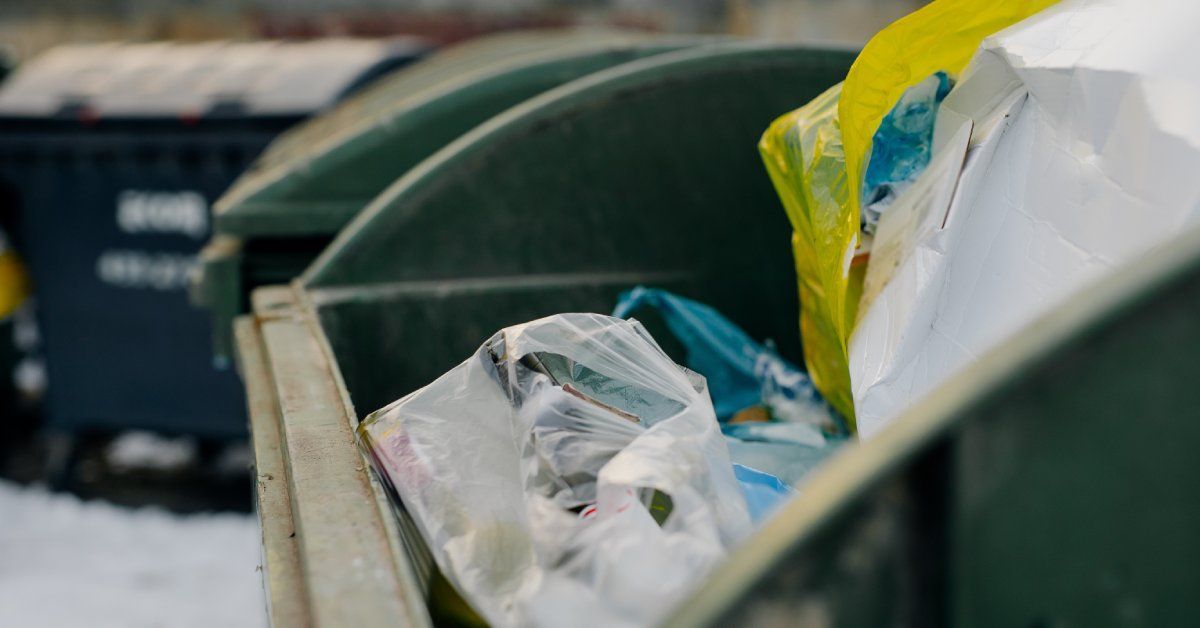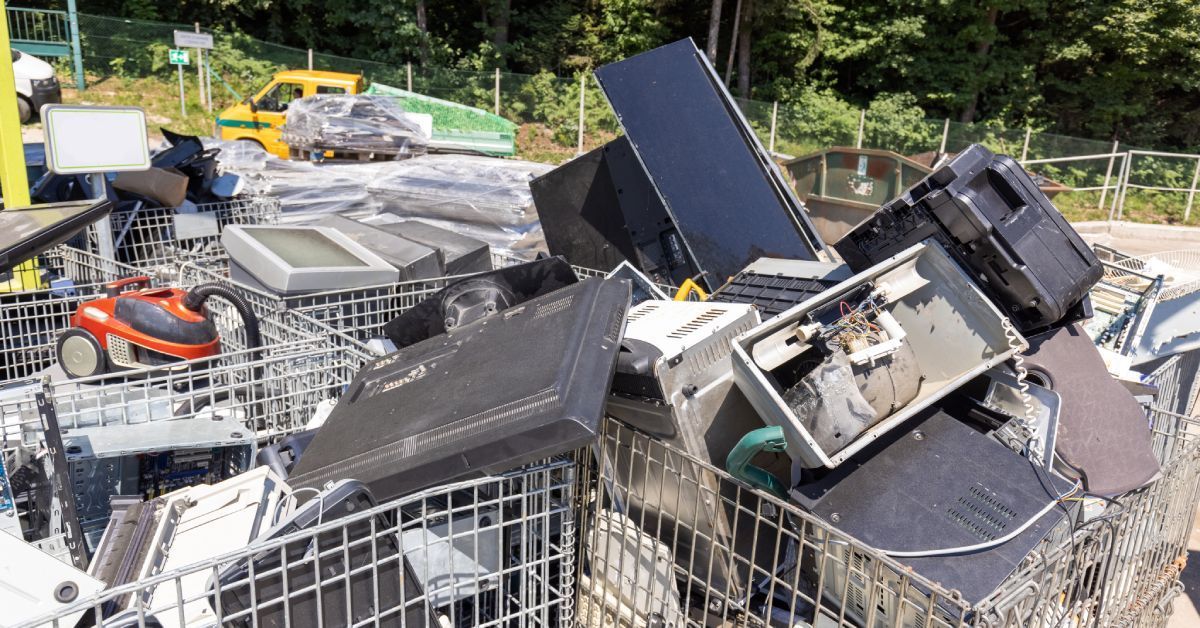When the Job Is Done: Construction Site Cleanup 101
The job isn’t always over after completing the main project when it comes to a construction site. You always want to ensure that you leave the site clean and in a safe condition for people to go through it. Follow this construction site cleanup 101 guide when the job is done to know how to properly execute these final tasks.
The Importance of Construction Site Cleanup
Despite being an essential part of the building process, it’s easy to overlook construction site cleanup. A clean site ensures the safety of workers and visitors, as debris and leftover materials can pose significant hazards if you don’t properly manage them. Properly maintaining a site can improve your project’s aesthetics and reputation.
It’s also important to keep your site clean to comply with any local regulations regarding the cleanup or removal of certain materials. Many regions have strict guidelines governing waste disposal and site maintenance, and failing to adhere to these can result in fines or delays in project approval. You can uphold legal requirements and demonstrate your commitment to quality and responsibility by prioritizing proper site cleanup.
Planning Your Cleanup Strategy
It’s always a good idea to have a strategy in place before you start your cleanup. Understanding the size of the project and knowing which type of materials you’re working with allows you to make any necessary arrangements. For example, you may need to rent certain equipment or waste removal services for hazardous materials. Understanding your cleanup requirements will help you allocate resources efficiently.
You will also want to establish a timeline for the cleanup process. Consider the project’s schedule and coordinate with other contractors to avoid conflicts. Having a rough idea as to how long cleanup will take can help you transition from one project to another without the cleaning causing unexpected or unnecessary delays.
Types of Waste and Their Disposal
Construction sites generate a variety of waste materials, each requiring specific disposal methods. Common types of waste include concrete, wood, metals, and hazardous substances such as asbestos or lead. You can save a lot of time and make things more efficient by knowing these materials and properly categorizing them.
You may even be able to reuse some of them. For example, you could crush up concrete to use as aggregate on new projects. You can turn wood into mulch or fuel and easily recycle metals, such as steel or aluminum, for cash to put toward new endeavors. While it may take a little bit more time, you can take advantage of separating and utilizing different materials by getting a dumpster rental and only disposing of items that you cannot recycle or reuse.
Choosing the Right Equipment and Tools
The right equipment can make a significant difference in your cleanup process’s efficiency. Depending on the site’s size and complexity, you may need a combination of heavy machinery and manual tools. Some of the most common tools for moving debris are excavators, bulldozers, and skid steers. You should also keep smaller tools on hand, such as shovels, brooms, and wheelbarrows, whenever you need a little more hands-on work.
Investing in high-quality equipment can improve productivity and reduce downtime. Regular maintenance checks and proper training for operators are also essential to ensure safety and prevent accidents. You can expedite the cleanup process and achieve better results by equipping your team with the right tools.
Safety Measures and Protocols
While you may want to rush construction site cleanup when the job is done, you must always bear safety in mind and focus on the health and well-being of the people working at your site. Implementing strict safety protocols protects workers and minimizes the risk of accidents. Conduct a thorough risk assessment to identify potential hazards and develop strategies to mitigate them.
Personal protective equipment (PPE) is a fundamental component of site safety. Every worker and visitor on site should have access to the right gear, including hard hats, gloves, goggles, and steel-toed boots. Regular PPE inspections and replacements maintain their effectiveness and safeguard your team.
You must establish clear lines of communication to maintain safety when it comes to construction and site cleanup. Encourage workers to immediately report any hazards or incidents and conduct regular safety briefings to reinforce protocols. A culture of safety protects your team and contributes to a more efficient and effective cleanup process.
Collaborating With Professional Cleanup Services
While some construction managers prefer to handle site cleanup internally, collaborating with professional services can provide numerous benefits. These experts bring specialized knowledge and equipment to ensure that the cleanup is thorough and efficient. It may also be better for your budget, as hiring a professional crew may cost less than the salary for the number of workers you would need to pay to clean up.
Professional cleanup services often have access to advanced machinery and technologies that may not be available in-house. This access can expedite the process and allow for more precise material handling. Professional cleanup crews have experience in navigating local regulations and can ensure compliance and avoid potential legal issues.
Documenting the Cleanup Process
It’s always a good idea to keep logs and records of the cleanup process the same way you would for any job. Detailed records keep things transparent and accountable. Everything from who’s on staff to the scheduled working hours, what tools or materials you bring in, and where you’re disposing of things provide insights for projects and demonstrate compliance with local regulations.
Begin by documenting the types and quantities of waste generated during the cleanup. Include information on disposal methods and any recycling efforts undertaken. Photographs and written reports can provide visual evidence of the site’s condition before and after the cleanup.
Continuous Improvement and Learning
Regulations may change, and new tools can make jobs easier. Site managers should regularly evaluate their strategies and look for areas where they can improve. This proactive approach ensures your team stays ahead of industry trends and best practices.
Encourage feedback from your team and stakeholders to gain valuable insights. Use this information to refine your cleanup processes and develop innovative solutions. Continuous learning and adaptation are key to maintaining a competitive edge in the construction industry.
Consider partnering with Handy Can Disposing and Recycling for all your waste management needs as you wrap up your construction projects and decide it’s time to tackle an in-depth cleanup. Our reliable dumpster rental services make it easy to manage debris disposal in compliance with local regulations. Choose Handy Can for hassle-free waste management solutions and take the next step toward a cleaner, safer construction site. Contact us today to learn more about how our services can support your project’s success.
